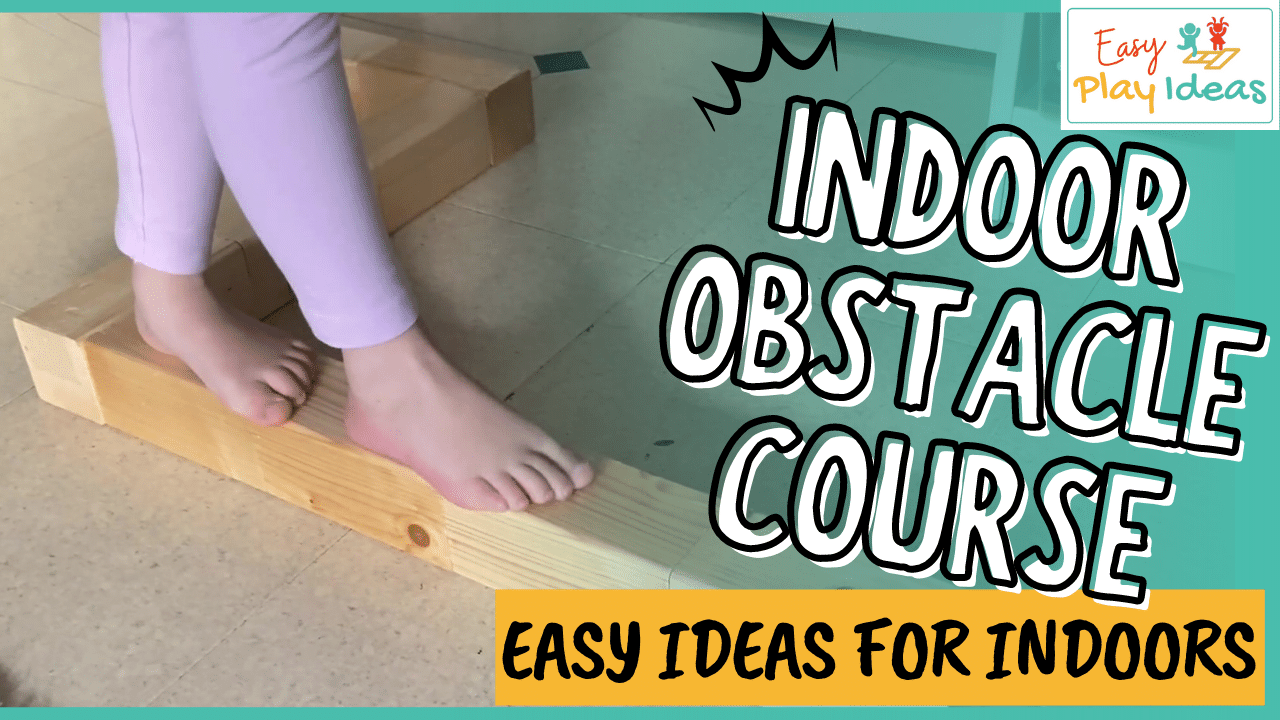Obstacle Courses for Indoors and Outdoors
Obstacle courses are a fun way to get kids moving! Watch the videos below to see an example of an outdoor obstacle course and an indoor obstacle course.
A great way to encourage your child to move is to get them involved in setting up the course. Kids have amazing ideas especially if you are using non specific equipment. By this we mean, items that have not been made specifically for physical exercise such as trampolines and hurdles. So where to start? Our video below shows over 20 ideas that use thing you have at home rather than play equipment.
Start with something like a cushion or a piece of cardboard that has an arrow drawn on it. Then look around and see what you can use. In our videos, we have used some things that are intended for physical play such as a slide. We have also used other items such as cardboard tubes, bricks, cardboard pieces, a blanket, paper, building blocks held together with tape and a bucket. Whatever you have around your home that is safe to use and can be turned into something that can create a challenge for your child. We have seen some well thought out courses made by kids so we believe it is worth encouraging their input.
Why are obstacle courses great for learning? There are the obvious reasons that include developing gross motor skills, balance and coordination. Other pluses include problem solving while negotiating obstacles, confidence building, resilience and turn taking when others are involved. Helping to plan the course means thinking creatively for new ideas and trying them out to see if they work. If they don’t, then dealing with disappointment and trying something different.
Movement and positional language is important for children’s learning. A great way to develop language is to make comments such as “I see you are an expert at crawling through the tunnel” or “You bent down low to go under that table” or “I could see how you were looking carefully to see where you were stepping.” Comments that use action words, such as hopping and climbing, and positional words, such as on and in front, are important words to add to your child’s vocabulary.
Being outdoors is great for an obstacle course but so is indoors. For our indoor one, we used what we could find. We wanted hurdles so we bent pieces of cardboard. We wanted a path to walk through and one of the children thought of using the books. We had to problem solve with the books because the pages were getting in the way. We thought of using pegs to hold them. It was interesting to watch the children go through the outdoor course and the indoor course. First they negotiated them more or less as expected. As their confidence increased they began to use different ideas for moving through the course. Examples are skipping and walking backwards. This made the interest in the courses last longer and it also inspired the children to create their own courses during their play. And that is what it is all about! We hope our videos do that for the children who watch the videos. We are hoping that they will see something exciting on our videos and then try to do their own versions.
To help you get started with your obstacle course, download and print our obstacle course task cards and hands and feet.
Happy playing!
Obstacle course products you may be interested in
Click on the image below to find out more.



















